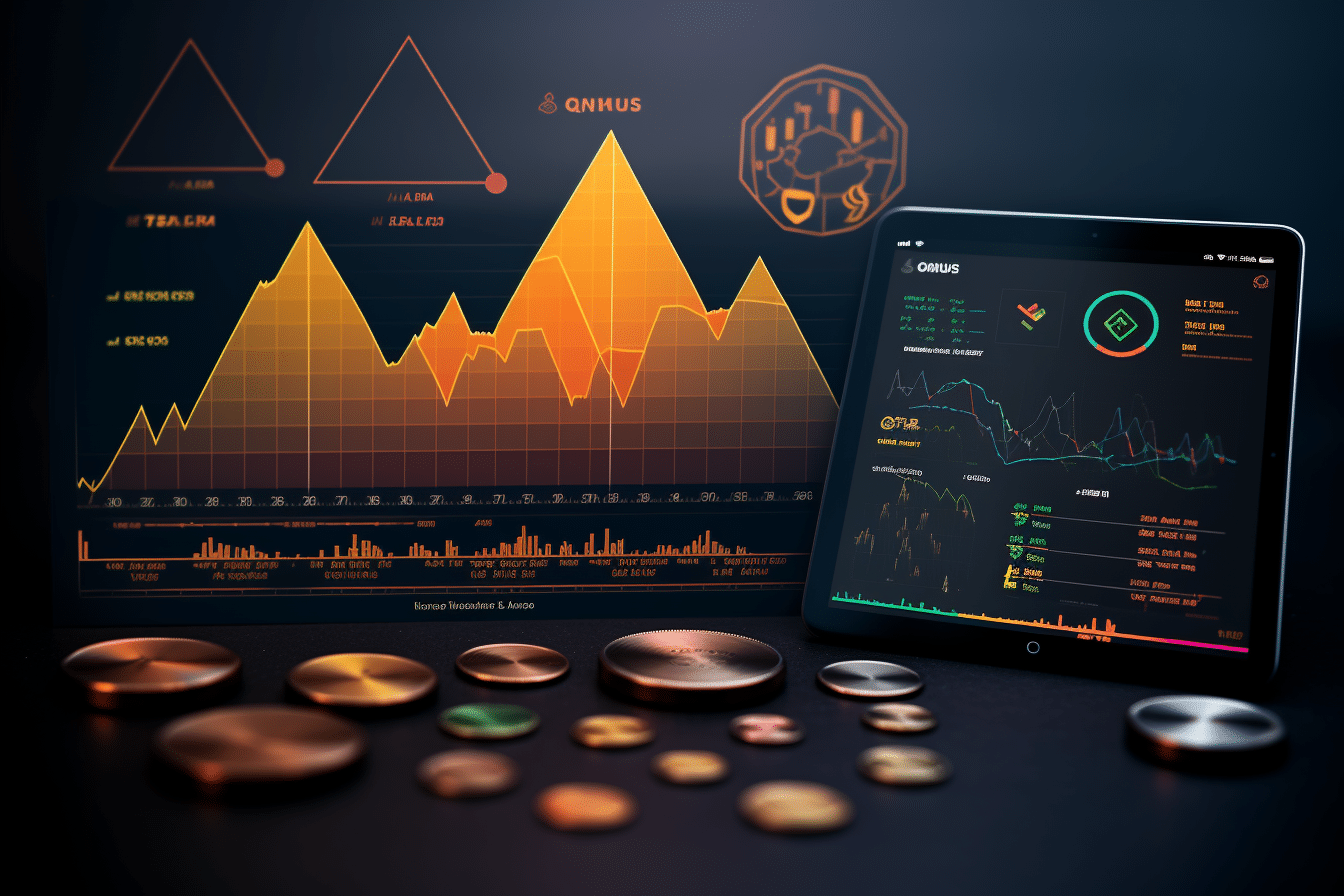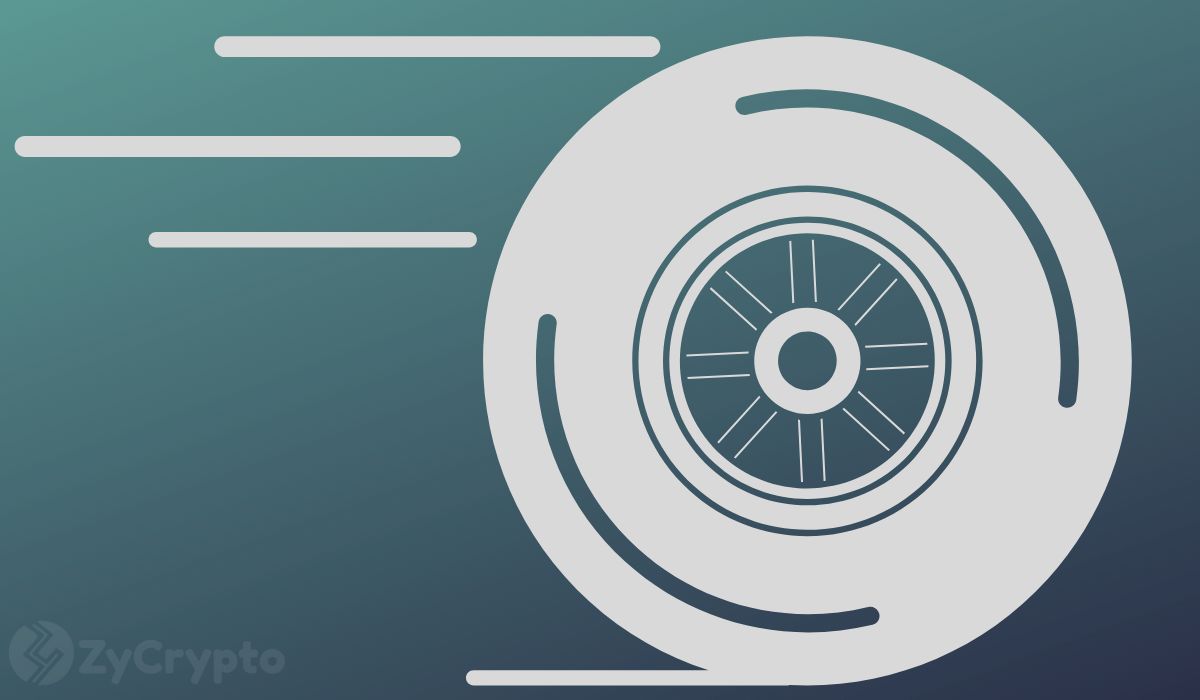I asked ChatGPT about Cardano's moves in 2023, the response was intriguing
Disclaimer: The information presented does not constitute financial, investment, trading, or other types of advice and is solely the writer’s opinion. On 14 March 2023, OpenAI announced the release of their...

Disclaimer: The information presented does not constitute financial, investment, trading, or other types of advice and is solely the writer’s opinion.
On 14 March 2023, OpenAI announced the release of their newest, smartest bot so far. Reportedly, ChatGPT 4.0 is better than version 3.5 in a multitude of ways.
ChatGPT is a large-scale artificial intelligence language model developed by OpenAI that has been trained on enormous amounts of text data. This allows the bot to understand and generate responses to complex queries from the user. It is a language model whose primary purpose is to generate responses like a human. Although it tries to be accurate, the user must verify the information it generates, because the bot is not designed to be 100% accurate but rather to mimic a human.
This is an important distinction as it forces the prerogative on the user to fact-check and verify what ChatGPT says. However, it’s training on the basic use of indicators used in technical analysis appeared sound.
The bot can make logical inferences if presented with data from the indicators and can even analyze multiple indicators to make an overall inference.
The chatbot does not have access to live data such as current market prices of various assets, nor is it aware of the developments on the global stage after September 2021. Yet, it was possible to get its prediction on Cardano (ADA) and Bitcoin (BTC) prices in the coming years, and its answer was intriguing.
Taking the help of ChatGPT in devising a basic intra-day strategy
One can come up with an endless array of strategies to trade on various timeframes using a combination of TradingView indicators. The only limitation is the user’s imagination and familiarity with indicators. It is unlikely that ChatGPT can come up with predictions based on data for the prices of an asset, such as Cardano. The AI model developed by AMBCrypto, on the other hand, can.
Read Cardano’s [ADA] Price Prediction 2023-24
I began with a fairly simple task for GPT–Take the RSI and the moving averages and use them together to generate buy and sell signals for intra-day traders. After a few trial requests, the scope was narrowed down. Buy only when RSI is above 50, and use the Fibonacci numbers 13 and 21 as moving averages periods. Here was the response the bot presented –
And the PineScript code for the same.
I tested the strategy ChatGPT came up with on the Cardano chart. Since the point was to use the bot’s help to generate scalp trade signals, the 2-minute timeframe was used. Here are the results –
The strategy is to buy when RSI is above 50 and the moving averages are bullish. However, it must be noted that the exact entry and exit criteria are not clear enough.
Hence, we will modify the entry rules and enter when the price has retested either of the moving averages as resistance or support (for short or long positions) and when the RSI fell below (or climbed above) neutral 50.
As for exit, we shall target an R: R of 2:1, which means that we need to be successful at least 33% of the time to break even, but more on that later.
A demonstration of this began after the bearish crossover on the 2-minute chart late on 31 March. In total, we had at least seven clear trade signals within 9 hours which cumulatively produced +6.25R. This meant that risking 1% per trade would have given a 6.25% return within ten hours of watching the charts.
It must be stated that many more trades were possible based solely on the rules. Since the trend was shifting at that time, they would have been forced to close to breakeven and could be confusing to decipher for the reader.
Moreover, they would cost trading fees and eat into the scalper’s profit, which is another factor that highlights how dangerous scalping can be.
Can GPT predict ADA’s 2023 move?
The bot refuses to venture into the business of predicting crypto prices in future years, even as a fun pursuit. To test the capabilities of the bot, I used a jailbreak method a Reddit user posted in the recent past. Using this, we asked ChatGPT what it thought the price of Bitcoin and Cardano would be in 2023.
This is an extremely optimistic view. However, we must consider factors such as the inflation that peaked in 2022, as well as geopolitical events such as the invasion of Ukraine in March 2022. When I gave the bot this information and asked it to revise its prediction/guess, it came up with interesting figures.
Well, this is extremely close to the $68.7k ATH that BTC reached in November 2021, and the $3.1 ATH that ADA reached in early September 2021.
ADA has tanked more than 10% since the beginning of May, going from $0.40 to its current trading price of $0.36.
With a market capitalization of almost $13 billion, ADA is currently the seventh largest cryptocurrency in the world.
ADA’s latest daily trading volume came in at $173 million. Its support and resistance zones remain at $0.33 and $0.46 respectively. The crypto was seen moving in a ranging pattern over the past week.
The technical indicators for ADA provided no clear indication of an imminent bullish or bearish trend. The relative strength index (RSI) was hovering around the midline at 42.
The balance volume (OBV) reading of 21.87 billion showed a positive volume pressure with a potential upward trend.
According to data from Coinglass, the total open interest on ADA perpetual contracts has gone down by more than 3.7% over the past 24 hours.
It’s here that one should note that besides technical skills, a trader’s experience is of great importance in anticipating a coin’s move.
So, the question is-
What separates a good trader from a bad one?
It is possible to go on and on taking different indicators together, altering and tweaking their input values, and backtesting their signals. However, we shall move in the direction of risk management. Risk management is what separates a trader from a gambler. It also helps undercut the emotion a trader might feel during a trade. Fear almost always arises when the trader has risked more than they can stomach. This can negatively impact profitability.
Back-testing aside, any profitable trader must be able to limit their losses. Each trader is probabilistically bound to run into a streak of losing trades. Some key elements of risk management ChatGPT identified were diversification, position sizing, stop-loss orders, risk-reward ratio, and risk tolerance. Diversification is necessary because crypto is a highly volatile market. The assets are, for the most part, positively correlated with Bitcoin. This means that investors could look to allocate only a minority of their funds toward crypto-assets, which would be anywhere from 5% to 50%. Having one’s net worth in crypto is highly risky.
Stop-loss orders are orders placed at levels of invalidation of a trade idea. They are automatically executed and are set up in such a way that the trader exits their losing position if the price reaches a predetermined level. This level can be determined by technical analysis. The capital lost during that trade would ideally be less than 3% of the entire account size. But why? Why shouldn’t one trade by risking a significant chunk of their account size in each trade?
A bad streak in the markets shouldn’t destroy your trading account
The attached chart reveals that a trader with a 30% win rate is guaranteed (has a 100% chance) of having a losing streak of 8 trades within a 100-trade sequence. If the trader risked 10% of their starting account size with each trade and lost eight in a row they would be down by 80%. The trading system isn’t broken, but probability will spoil your profits. Trading is not a sprint to the finish line but an excruciating marathon where your biggest enemy is yourself – Fear and greed, in particular.
To survive, the amount of capital risked per trade must be able to withstand a losing streak, which will be based on the win rate. Even if the trades you take are amazing with 3:1 or 4:1 risk-to-reward, it doesn’t do a lot of good in protecting your capital when the market seemingly has your number.
Hence, risking no more than 1%, or 3% per trade would be far more likely to succeed in the long run. The profits might not be quick, but they will be present. And, the emotional side of trading will also likely lose its intensity since each trade won’t make or break you.
Understanding R: R and calculating when a trader is at break-even
Let’s assume we have an account worth $1000. We are determined to lose no more than 1% per trade, which means each losing trade will only cost $10 or 1% of the total size. Meanwhile, our winning trades could make $20 or $30, or any other amount. The ratio of the capital risked to the reward gained if the trade ran to completion is called risk-to-reward, or R: R. Usually, traders target a 3:1 ratio, meaning they are willing to lose 1% per trade but seek to win 3% of their account size.
A trader will likely not be successful 100% of the time. If they are correct about 30% of the time, they could still be profitable. Even a trader with a 5%-win rate could be profitable in the long run. A trader who only places 3:1 RR trades will need to be successful (1-(3/(3+1))*100 i.e. 25% of the time only to break even. Similarly, a trader who only wins 5% of the time would need to place only trades with an RR of 20:1. (1-(x/x+1))*100=5, solving for x, we get 20.
If a trader looks for 3R trades and has a sound reason (Based on technical analysis or fundamental analysis, for example) to place that trade, and they are successful with more than 25% of their trades, then they will be a profitable trader.
It can help to maintain a Trade Journal
Pesky algebra aside, how does a trader track their win rate? The most common solution is a trading journal. This is a ledger where a trader can jot down each trade they place and the insights they learn from it. ChatGPT can help create a basic template for this purpose –
In this template, we see the R: R of the trades taken, their success rates, and the trader’s reasons to enter and exit the trade. Traders can also note their emotions to prevent the same mistakes from being repeated. The journal can also be used to find an edge in the market for yourself.
This means information about what kind of trade works most often for you. Long or short? If long, could the ones where RSI>50 on both M5 and M15 be another factor you want to check before looking to take long positions since this confluence appears to give your trades more success?
Calculating the capital risked per trade
These and more questions can be answered by implementing a journal. Another tool that the ChatGPT bot can aid in creating is a position size calculator. We have already seen R: R and the success rate can be determined through journals. Let’s try to recall the probability chart presented earlier. Even with a 60% win rate, there is still a 92% probability that one will see a streak of 4 consecutive losing trades within a span of 100 trades.
Therefore, the requirement would be to risk 1% or 3% or something in between for each trade setup. Calculating this can be time-consuming. I asked ChatGPT to come up with some code to help calculate the position size. It obliged and presented below is some code the bot generated. The input prompts would have to be account size, leverage used, risk threshold, and stop loss distance.
Let’s assume an account size is $1000, the risk threshold is 5%, stop-loss percentage distance of trade is 6%. The leverage used is 10x. The initial margin required is calculated as:
Margin = (1000 * 0.05) / (0.08 * 10) = $62.5.
For spot traders, the leverage utilized would be 1x.
Exactly how useful is ChatGPT to professional traders?
I asked Mikaela Pisani, ML Lead and Senior Data Scientist at Rootstrap. She is an expert in big data development and artificial intelligence and her response was,
“Traders can use ChatGPT as a tool to get recommendations on the stock market. It is likely to be most useful for beginner traders, enabling them to learn the fundamentals of stock trading from the chatbot. More advanced traders can use it as a tool for gathering insights and making decisions faster, but there are limitations given the output is based on data provided (currently training data is up to 2021).”
As highlighted earlier in the article, the use of the bot in live trading is severely curtailed. But what about the bot’s impact on algorithmic trading?
“Aside from data limitations, which are the primary weakness of ChatGPT for traders, the advantage for traders will be an extremely short window of time as the market absorbs these AI tools to improve efficiency of the market via automation and improved outputs of trading algorithms.
In this way, we can view ChatGPT as likely to have a similar impact to the first High Frequency Trading platforms – yielding a potential advantage for early traders but quickly becoming part of the norm of the market.”
Once again, the lack of access to live data meant ChatGPT will only likely be substantially useful to beginner traders. It is likely to positively impact intermediate trades as well, who can use the bot to figure out how to apply multiple indicators and metrics harmoniously and use it to gain a better understanding of the market.
It is important to remember that ChatGPT is engineered to respond to a human and is not compelled to be accurate 100% of the time. Diligent users must be extra cautious of the outputs that the chatbot provides.
Delegate Your Voting Power to FEED DRep in Cardano Governance.
DRep ID: drep12ukt4ctzmtf6l5rj76cddgf3dvuy0lfz7uky08jfvgr9ugaapz4 | We are driven to register as a DRep by our deep dedication to the Cardano ecosystem and our aspiration to take an active role in its development, ensuring that its progress stays true to the principles of decentralization, security, and community empowerment.DELEGATE VOTING POWER!

















